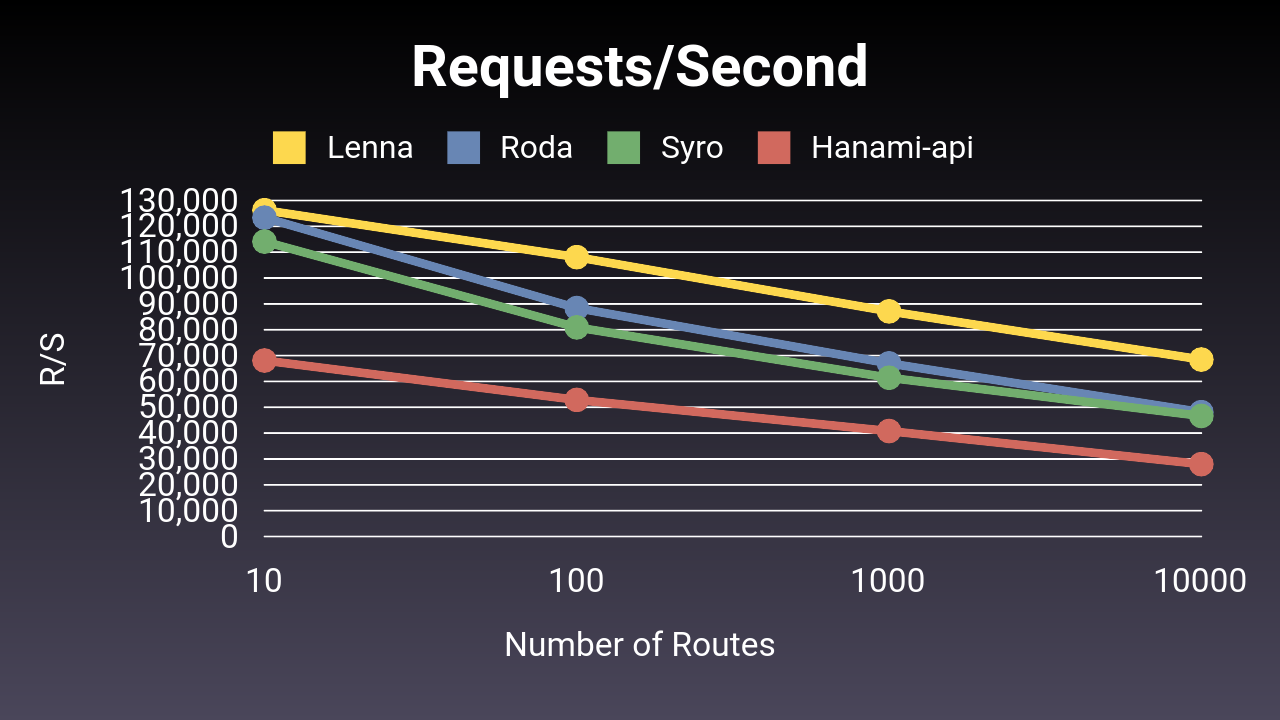Lennarb is a lightweight, fast, and modular web framework for Ruby based on Rack. The Lennarb supports Ruby (MRI) 3.0+
Basic Usage
require "lennarb"
Lennarb.new do |router|
router.get("/hello/:name") do |req, res|
name = req.params[:name]
res.html("Hello, #{name}!")
end
endSee all graphs
| Position | Application | 10 RPS | 100 RPS | 1.000 RPS | 10.000 RPS |
|---|---|---|---|---|---|
| 1 | Lenna | 126.252,36 | 108.086,55 | 87.111,91 | 68.460,64 |
| 2 | Roda | 123.360,37 | 88.380,56 | 66.990,77 | 48.108,29 |
| 3 | Syro | 114.105,38 | 80.909,39 | 61.415,86 | 46.639,81 |
| 4 | Hanami-API | 68.089,18 | 52.851,88 | 40.801,78 | 27.996,00 |
This table ranks the routers by the number of requests they can process per second. Higher numbers indicate better performance.
Plese see Performance for more information.
-
Getting Started - This guide covers getting up and running with Lennarb.
-
Performance - The Lennarb is very fast. The following benchmarks were performed on a MacBook Pro (Retina, 13-inch, Early 2013) with 2,7 GHz Intel Core i7 and 8 GB 1867 MHz DDR3. Based on jeremyevans/r10k using the following template build.
-
Plugin - You can create your plugins to extend the functionality of the framework.
-
Response - This is the response guide. The
resobject is used to send a response to the client. The Lennarb use a custom response object to send responses to the client. Theresobject is an instance ofLennarb::Response.
This project uses the Developer Certificate of Origin. All contributors to this project must agree to this document to have their contributions accepted.
This project is governed by the Contributor Covenant. All contributors and participants agree to abide by its terms.

